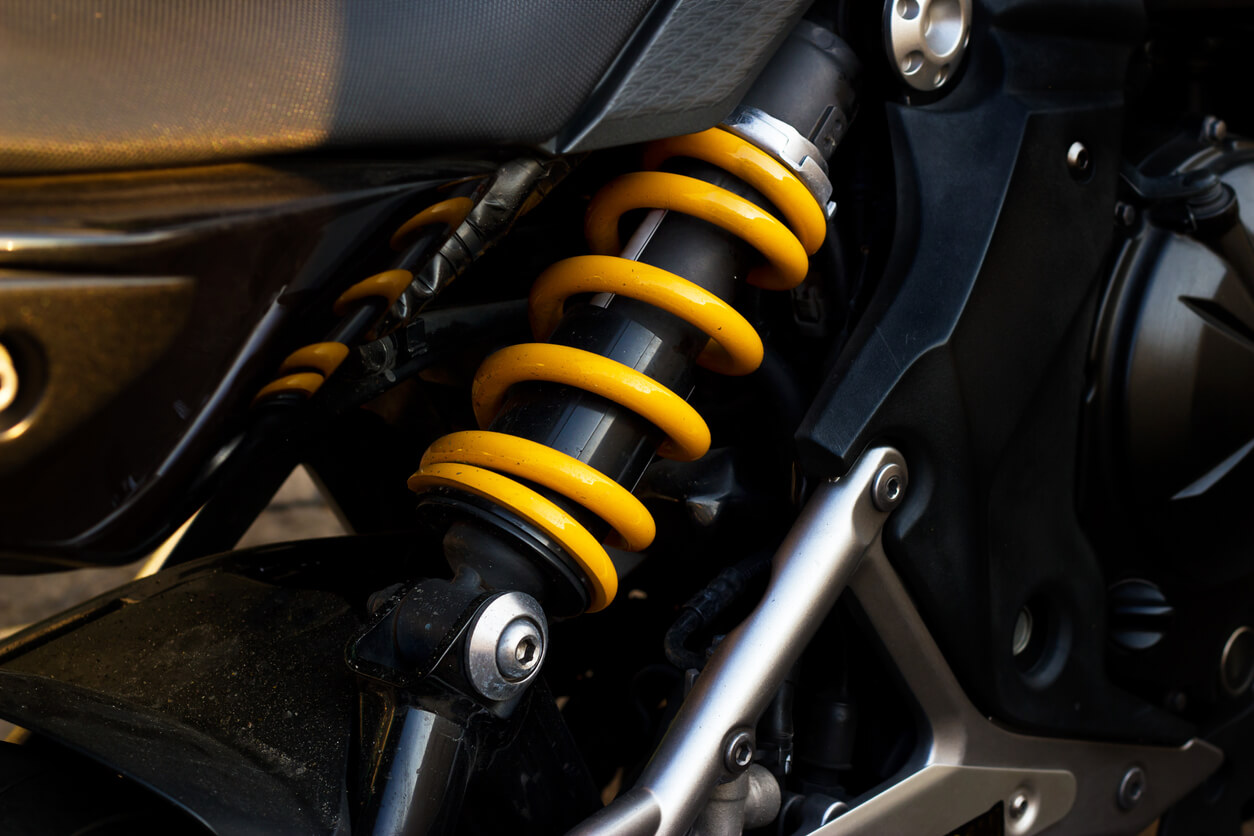WORKSHOP OPENING HOURS: Mon - Fri 9am - 5pm | Sat 9am - 1pm
+44(0) 1249 721 001WORKSHOP OPENING HOURS: Mon - Fri 9am - 5pm | Sat 9am - 1pm
+44(0) 1249 721 001
01-Oct-2020
Motorbike suspension plays a very pivotal role in terms of the handling and braking of the bike, as well as ultimately providing safety and comfort to the rider.
The job of any suspension is to keep the bumps or vibrations in the road from upsetting the motorbike’s chassis, and to keep the tires in contact with the surface.
It is imperative to correctly set up the suspension on your vehicle, and of course, how you do this will be dependent on the kind of motorbike or motorcycle and the purpose you are using it for. Having a full understanding of the behaviours of your suspensions will certainly pay dividends down the line.
We know that if you’re not in the know, all of the different terms you may have heard in relation to motorbike suspension can be somewhat puzzling. This is why we have decided to put together somewhat of a glossary of the most important motorbike suspension terms that would be great for you to know.
Preload is essentially a measurement of how much the spring is compressed in both the forks and shock. With greater preload, the motorbike’s suspension will be raised, near the top of travel, and with less preload, it will sit lower, closer to the bottom of its suspension travel.
Suspension sag (sometimes referred to as loaded sag) is the amount of suspension travel used when a rider sits on a bike. The name comes as the motorbike ‘sags’ under the rider’s weight. It’s important to ensure your bike has the correct amount of suspension sag – too much and you’ll end up bottoming out your suspension too often, and too little will make the suspension feel stiff, with not enough give on potholes or speed bumps.
Damping helps control the friction force exerted when riding, removing unwanted suspension motions that often occur from bumps and knocks on the road or track. Suspension damping controls or can stop altogether the spring’s oscillation, and when fitted it can make your motorbike more stable. Additionally, damping also plays a significant role in preventing rider fatigue, which in turn aids road safety.
Compression damping helps the suspension absorb any bumps or road irregularities or when a rider uses the brakes too harshly. If a bump in the road or track forces the wheel upwards, the compression circuit controls the speed at which the suspension compressed. This is usually achieved through oil circulating through a compression circuit.
Adequately named, rebound damping helps the suspension to return (or rebound) to its full travel after an impact or bump causes the fork to compress. Very similar to compression damping, rebound damping also relies on oil moving through a circuit to regulate the speed at which the suspension extends after being compressed.
We hope you have found this article helpful, and that it has improved your knowledge and understanding of some of the different components that make up motorbike suspension. If you have any questions please do get in touch with us. It is important to note that your motorbike suspension needs to be maintained and serviced regularly by a specialist mechanic, like ourselves. We offer rebuilds, repairs, and servicing, so let us know if you require any assistance we will be happy to help and advise.